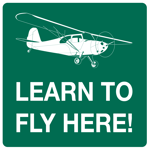On the 2015 NTSB most wanted list, you will find “Prevent Loss of Control in Flight in General Aviation” (see http://www.ntsb.gov/safety/mwl/Pages/default.aspx).
 The reason why we see Loss of Control on the list is that between 2001 and 2011, over 40 percent of fixed-wing GA fatal accidents occurred because pilots lost control of their airplanes.
The reason why we see Loss of Control on the list is that between 2001 and 2011, over 40 percent of fixed-wing GA fatal accidents occurred because pilots lost control of their airplanes.
The definition and various classifications of Loss of Control (LOC) are complex, but the basic problem is not. In a number of different situations,
- Pilots fail to recognize that they are losing control
- Pilots fail to react correctly when they realize that they are losing control
The NTSB has a number of suggestions on how to prevent Loss of Control. We have an additional suggestion:
Come fly the Decathlon (http://www.flythedecathlon.com/). Experience loss of control in a safe environment. Discover what losing control feels like (we will help safely place you in the attitude for the specific LOC exercise), and even more important, discover that you are in fact capable of getting the airplane out of a stall, a spin entry, even a developed spin, inverted flight and other unusual attitudes. Repeat recovery until it becomes an instinctive response that will make you react correctly if you ever get into an emergency situation.
To do this, you do not need to get a tailwheel endorsement, get checked out in the Decathlon or get into any hairy aerobatics beyond what you are interested in. You just need to book your instructor for some ground training and one or more flights in a suitable airplane.
Other suggestions, such as installing AOA indicators, are certainly extremely valuable. However, in your mind, what compares to practicing the correct response over and over until it becomes second nature?
Maverick says it: ” You don’t have time to think up there!”



